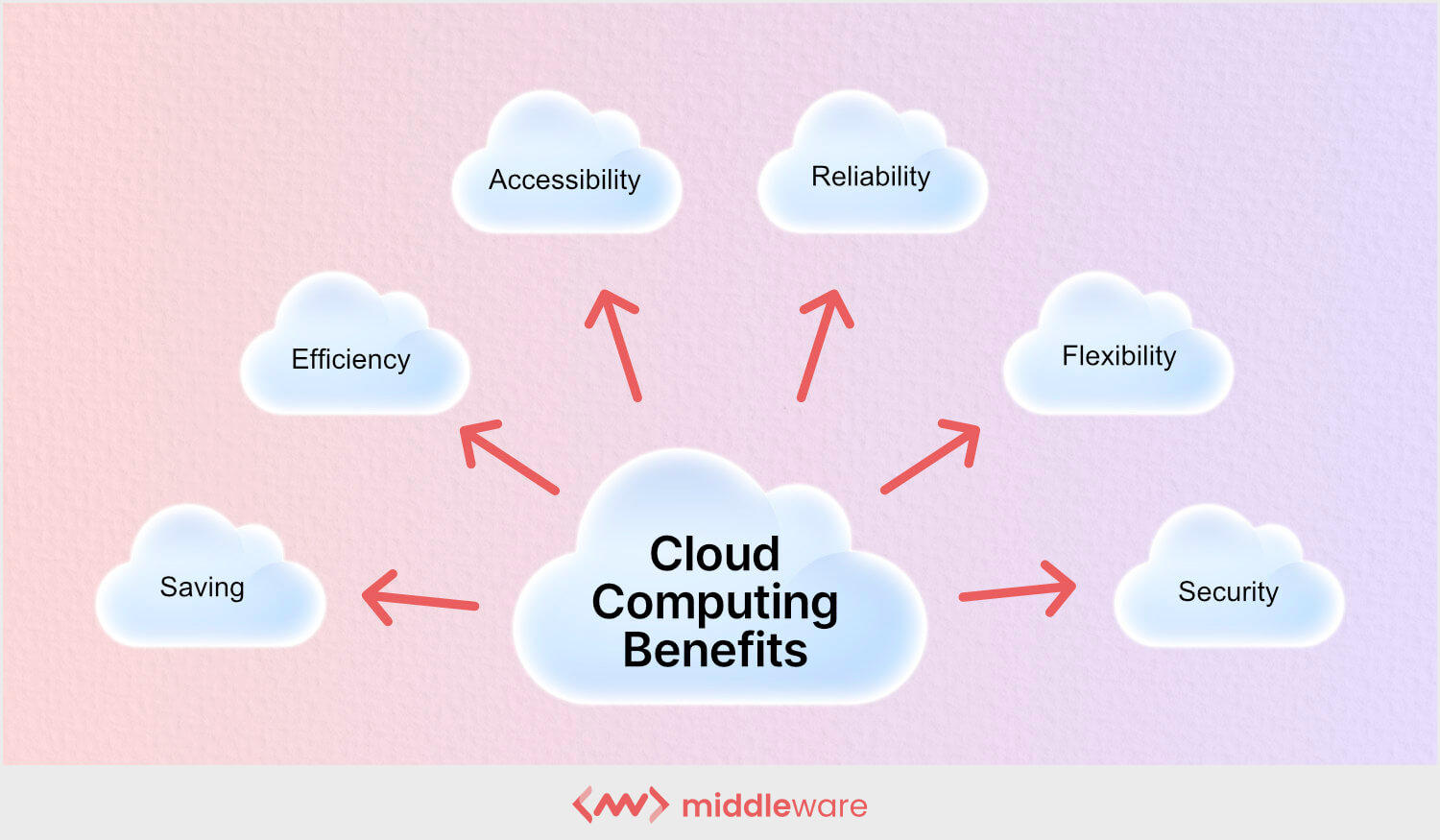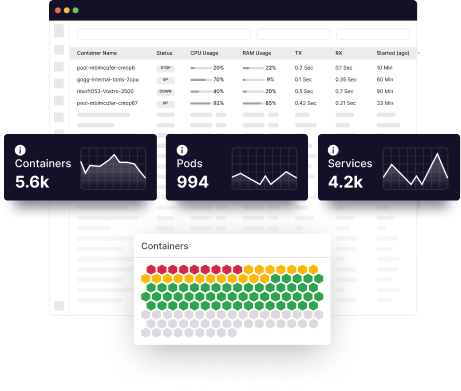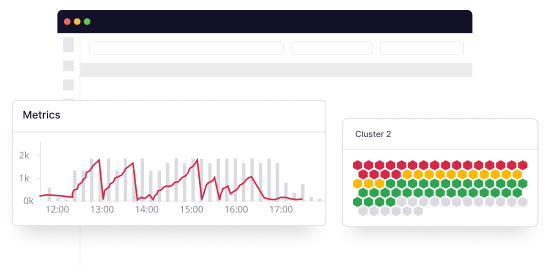Cloud infrastructure has grown in popularity in recent years due to advantages such as increased flexibility in resource management, cost efficiency, and easier scaling. Startups and enterprises can now quickly capitalize on all of these to ensure the success of their businesses.
Keep reading to learn more about cloud infrastructure, its tools and how your business can benefit from it.
What is cloud infrastructure?
Cloud infrastructure is a term that describes components required to deliver cloud computing services. It includes hardware, servers, storage systems, networking equipment, and software components.
Cloud infrastructure is generally owned and operated by a cloud service provider and is used to deliver a wide range of services, including infrastructure as a service (IaaS), platform as a service (PaaS), and software as a service (SaaS).
Cloud infrastructure is designed to be highly scalable, flexible, and resilient, with the ability to provision quickly and de-provision resources as needed to meet customers’ changing needs. It is typically accessed over the internet and can be used by organizations of all sizes to access computing resources on an as-needed basis rather than having to build and maintain their in-house infrastructure.
Top cloud infrastructure components
In a cloud computing architecture, cloud infrastructure refers to the back-end technology components commonly found in enterprise data centers, such as servers, persistent storage, and networking equipment, but on a much larger scale.
Some large cloud providers, including hyper-scale cloud firms like Facebook and LinkedIn, enter into agreements with manufacturers to create specialized infrastructure components optimized for specific purposes, such as power efficiency or workloads involving big data and AI.
- Hardware: This includes the physical servers, storage devices, and network equipment that make up the underlying infrastructure of the cloud.
- Virtualization software: This allows multiple virtual machines to run on a single physical server, effectively abstracting the underlying hardware and making it more flexible and efficient.
- Cloud orchestration and automation software: This software is used to manage and automate the cloud infrastructure’s deployment, scaling, and maintenance.
- Cloud storage: It refers to storing data on remote servers that can be accessed over the internet, as opposed to storing data locally on a device or in a private data center.
- Networking: This includes the virtual and physical networks that connect all the cloud infrastructure components, as well as the software-defined networking (SDN) tools used to manage and configure these networks.
- Management and monitoring tools: These are used to monitor and manage the health and performance of the cloud infrastructure, including tools for monitoring resource usage, troubleshooting issues, and enforcing security and compliance policies.
- Datacenter: This is the physical location where the cloud infrastructure is hosted, typically consisting of racks of servers, storage devices, and networking equipment.
- API for interfacing: The API provides a way for programmatic access to the infrastructure; this includes standardizing and providing a common interface for automating the different aspects of the infrastructure, from provisioning and scaling to monitoring and troubleshooting.
- Identity and Access management system (IAM): A service provided by the cloud provider for managing and authenticating users, including services for creating and managing user accounts, setting permissions, and enforcing security policies.
These are some of the critical components of a cloud computing infrastructure. Still, the specific implementation and technology choices will depend on the cloud provider and the particular application’s requirements or workload.
Types of cloud infrastructure
There are several different types of cloud infrastructure, each with its characteristics and use cases. However, the most common types of cloud infrastructure are:
- Public Cloud: Public clouds are owned and operated by a third-party provider, such as Amazon Web Services (AWS), Microsoft Azure, or Google Cloud Platform (GCP). These providers make their resources, such as servers, storage, and databases, available to the general public over the internet. Public clouds are generally the most cost-effective and scalable option, but they also have the least control over the infrastructure.
- Private Cloud: A private cloud is a cloud infrastructure dedicated to a single organization. It can be owned and operated by the organization itself or by a third-party provider. Private clouds provide more control and customization than public clouds but also tend to be more expensive and less scalable.
- Hybrid Cloud: A hybrid cloud is a combination of both public and private clouds, where different parts of the workload are run on different types of infrastructure. This can be used to take advantage of the cost and scalability benefits of public clouds while maintaining control and security of private clouds.
- Community Cloud: Community clouds are shared infrastructure intended for specific communities. A community may be defined by a shared mission or interest or a group of organizations with shared concerns. This type of cloud infrastructure is usually operated by a third party and owned jointly by community members.
- Edge Cloud: Edge cloud infrastructure allows processing and storing data closer to the network’s edge rather than sending all data back to a centralized cloud data center. This infrastructure will enable faster, low-latency access to data and processing, which IoT, high-bandwidth require, and low-latency applications.
Each type of cloud infrastructure has its own advantages and disadvantages. The specific type of infrastructure that is best for a given workload will depend on various factors, including the type of application, security requirements, and budget.
Top 5 Cloud infrastructure providers
There are several major cloud infrastructure providers in the market, each with its own strengths and offerings. The most popular and widely used cloud infrastructure providers are:
- Amazon Web Services (AWS): AWS is one of the oldest and most widely used cloud infrastructure providers. It offers a wide range of services, including computing power, storage, and databases, as well as IoT, analytics, and machine learning services. It’s considered one of the most mature and feature-rich cloud providers.
- Microsoft Azure: Azure is Microsoft’s cloud infrastructure offering, which provides similar services to AWS, focusing on supporting Microsoft-specific technologies such as Windows and . NET. It also strongly integrates with other Microsoft services, such as Active Directory and Office 365.
- Google Cloud Platform (GCP): GCP is Google’s cloud infrastructure offering, which is known for its powerful data analytics and machine learning services, as well as its global network of data centers. GCP also offers many services to developers, such as serverless computing service, Kubernetes Engine, and more
- Alibaba Cloud: Alibaba Cloud is a cloud provider operated by Alibaba Group, the largest e-commerce company in China and one of the largest in the world. It is considered one of the top cloud providers in Asia and offers similar services as the others providers.
- IBM Cloud: IBM Cloud is IBM’s cloud infrastructure offering, which provides a wide range of services, including computing, storage, and databases, as well as AI, IoT, and blockchain services. IBM Cloud is particularly well-suited for enterprise and hybrid cloud deployments, focusing on security and compliance.
These are considered the top cloud infrastructure providers in the market based on their size, popularity, and breadth of services. Many more providers are available. A cloud infrastructure provider may have a substantial presence in some regions. A provider that works well for one company may not be the best fit for another.
Monitor your AWS, Azure & GCP environments using Middleware. Get Started.
10 cloud infrastructure benefits to look
Cloud computing has transformed numerous businesses across Industries. An integral part of cloud computing success is robust cloud infrastructure. Here are the ten advantages a strong cloud infrastructure adds up for your business:

Convenient and innovative software solutions
One of the biggest advantages of choosing cloud computing is the access that an enterprise can get to the industry’s leading technologies and software solutions. Choose from various features that cloud providers offer to its requirements. Once a cloud infrastructure is set up, you can use automatic software updates with improved security and new features.
As things stand, over 90% of organizations use cloud technologies in one way or another. Of those, 80% of startups and SMBs saw significant improvements within the first few months of adopting the cloud-based system.
While cloud computing is generally a rapidly evolving space where innovations and new features are regularly introduced, opting for a multi-cloud system could further help a startup and enterprise access software solutions best suited to its needs.
Ideal for easier collaboration and remote work

Regardless of the size of your company, it’s highly likely that you have two or more employees working together on a project. When your business grows, you’re potentially looking at projects that require multiple employees to collaborate and cooperate, sometimes in different geographic regions.
Another benefit of cloud infrastructure is that you can facilitate seamless and hassle-free collaboration between all your employees through a simple cloud-based platform. This means more work gets done faster, and working from remote locations becomes easier by overcoming geographic barriers.
The COVID-19 pandemic has primarily taught us that physical workspaces can become inaccessible at any point, and businesses should always be prepared for such contingencies. With cloud computing, an enterprise can easily deal with such unforeseen circumstances as and when needed.
Ensures flexibility and easier scalability
Choosing cloud computing makes a big difference in terms of how a business can optimize and deploy its resources.
First, outsourcing all your IT-related tasks to a third-party expert frees up significant resources that can be used to meet the business goals. Second, and more importantly, an in-house IT set-up simply doesn’t offer the flexibility in the features and software capabilities a business can choose from.
Every enterprise must seek growth, and choosing cloud computing makes it easy to scale its IT capabilities and meet growing business needs.
Allows for better automation
With an in-house IT infrastructure, you need a dedicated IT team to supervise, manage, and handle all IT-related operations. This team is also in charge of integrating changes or upgrades to the existing infrastructure. This is time-consuming and cost-intensive, and cloud computing provides a better alternative.
Cloud providers make regular security and feature updates to the servers in line with the highest industry standards. All of these updates become automatically available for your business. Cloud providers also fully manage and maintain servers to ensure optimal performance.
This simplifies software integration since applications are automatically optimized on the cloud. The subsequent improved level of automation frees up a lot of resources that your enterprise can leverage for financial growth and expansion.
Supports massive data and analytics
Hardware components that are part of inhouse setups have limitations in data storage, processing, and performance. With cloud computing, servers can handle large volumes of data, especially when you need greater bandwidth and faster network capabilities due to surges in usage and traffic.
Moving, migrating, and handling large data sets can be simplified with a multi-cloud approach that can help overcome modern data challenges such as data gravity.
By efficiently handling data and information,you gain access to smarter and more powerful cloud analytics regardless of the amount. You can use them to improve your services and better understand customer requirements.
Efficient disaster recovery and backup
Every company needs to be prepared for the worst-case scenarios, as any sort of downtime in today’s highly competitive market can be disastrous for business.
If you want to ensure disaster recovery to bring your IT services back up, you’d need huge investments in expertise and equipment.
Cloud providers, on the other hand, offer comprehensive, quick and cost-efficient disaster recovery solutions to customers. This makes cloud computing the optimal choice that simply cannot afford extended downtime.
When it comes to the disaster recovery success rate for cloud infrastructure, 20% of cloud computing customers claimed that disaster recovery was completed in four hours or less. Only 9% of non-cloud users saw similar disaster recovery success rates. This means that cloud computing is twice as efficient in reducing downtime.
Fast backups and the prompt restoration of data and IT services are factors that every company should integrate into its IT infrastructure, and cloud computing makes this process easier.
High data security
There have been concerns about security because a massive amount of data is regularly synchronized through a single server. However, cloud computing has made things easier and more secure because it provides a very advanced security feature that ensures data protection and application security.
In addition, it provides systematic authentication and encrypted data to ensure secure communication and improved data over networks, alleviating the headache of a data breach.
Automatic Software Updates
Continuous Integration and Continuous Delivery rely on the fact that new software versions can be easily tested and deployed in the cloud environment, allowing for higher product innovation velocity, and releasing more and more features to end users monthly, weekly, and in some cases, daily basis. Cloud environments also integrate with popular DevOps tools and logging systems, making monitoring and detecting production issues easier.
Storage Space
The cloud provides your company with virtually limitless storage capacity.
Whether you require public or private storage, you can (once again) customize your storage needs to avoid paying for items you will not use.
Adaptability
Cloud technology allows you to change your business on the fly, whether you’re scaling, pivoting, moving offices, or shifting to a more WFH-friendly environment.
Expansions require time and planning, but not having to worry about your computer’s virtual infrastructure is a huge benefit. You will have access to your information wherever and whenever you need it.
The Drawbacks of Using Cloud Infrastructure
While cloud infrastructure can provide many benefits, such as increased scalability, flexibility, and cost-efficiency, there are also some drawbacks to consider:
- Limited control: When using cloud infrastructure, you are effectively renting resources from a third-party provider, which means you have less control over the underlying hardware and software. You may be subject to limitations on customization and configuration and restrictions on the use of specific technologies or protocols.
- Internet dependency: Cloud infrastructure is accessed over the internet, which can be vulnerable to network outages or congestion. This can result in slow performance or temporary loss of access to resources.
- Vendor Lock-in: When a company starts using a specific cloud service, it could become dependent on that service, making it difficult and costly to switch to a different provider. This is referred to as vendor lock-in and can be especially problematic if the company wants to switch providers or bring their data or application back in-house.
- Complexity: Managing a cloud infrastructure can be complex, especially for organizations new to cloud computing. Managing and optimizing cloud resources may require additional training and expertise.
5 Requirements for building your cloud infrastructure
Build a Foundation
There is no one-size-fits-all approach when implementing cloud technology. So, before you jump into choosing a platform, analyze your organization’s requirements and objectives. Based on factors such as security, scalability, and prior virtualization experiences, you can opt for dedicated servers, managed private clouds, or hybrid cloud configurations.
Establish a Scalable and Configurable Delivery Infrastructure
You need an efficient delivery infrastructure with a well-designed load balancer to ensure effective resource allocation. This should be configured to provide baseline resources and capabilities for your cloud application and subsequently support scaling and system performance management.
Develop a Comprehensive Planning and Scaling Strategy:
Plan your cloud network with a focus on the integrations and communications of all components involved. You need to create a scalable architecture that can anticipate usage and stress on the infrastructure. Lastly, you need to implement a strategy to handle scaling in a way that considers the impact on app servers, network load, and databases.
Emphasize Security
Adopt a security-first approach while implementing cloud technologies. From the outset, integrate security measures across your infrastructure based on the type of application and the required level of protection. Monitor your practices continuously and stay updated with the latest security frameworks.
Automation
If you want to manage cloud resources effectively, try to enhance visibility and automate as much as possible. How that you define key performance indicators for monitoring and collecting relevant data? You can even dabble with AI to automate routine tasks, make data-driven decisions, and prioritize tasks.
How will cloud infrastructure evolve in the future?
Cloud computing gives companies access to the newest and most modern features in the industry without spending a lot of financial resources on an in-house IT infrastructure.
It’s a cost-effective and smarter option for emerging businesses looking to establish feature-rich IT infrastructure without investing too heavily. No wonder enterprise cloud spending is expected to make up 14% of IT revenue globally in 2024.
Another significant advantage of cloud infrastructure is that it’s an environmentally friendly and sustainable alternative. Virtual services, instead of services operated by brick and mortar server space (stationary server), drastically reduce the environmental impact by reducing paper consumption and improving energy efficiency.
If you own a company and are looking to enter the IT space, cloud computing is your best shot at sustainable success and growth.
Learn more about how Middleware can help you manage your cloud Infrastructure more effectively using Observability.
1) What are the different types of cloud infrastructure?
The four main types of cloud computing are private, public, hybrid, and multi-cloud. In addition, there are three kinds of cloud computing services: Infrastructure-as-a-Service (IaaS), Platforms-as-a-Service (PaaS), and Software-as-a-Service (SaaS).
2) What is the purpose of cloud computing infrastructure?
As data can be mirrored at multiple redundant sites on the cloud provider’s network, cloud computing makes data backup, disaster recovery, and business continuity more accessible and less expensive.
3) How does cloud computing infrastructure work?
Companies host or maintain massive data centers that provide the security, storage capacity, and computing power required to support cloud infrastructure. Clients pay for the right to use their clouds and an ecosystem that allows devices and programs to communicate with one another.
4) What are the three major pillars of cloud infrastructure?
The pillars of cloud computing platforms are compute, networking, and storage, and Azure is no exception. These three pillars are used by Azure’s infrastructure as a service, and platform as a service offerings are built on top of them.






